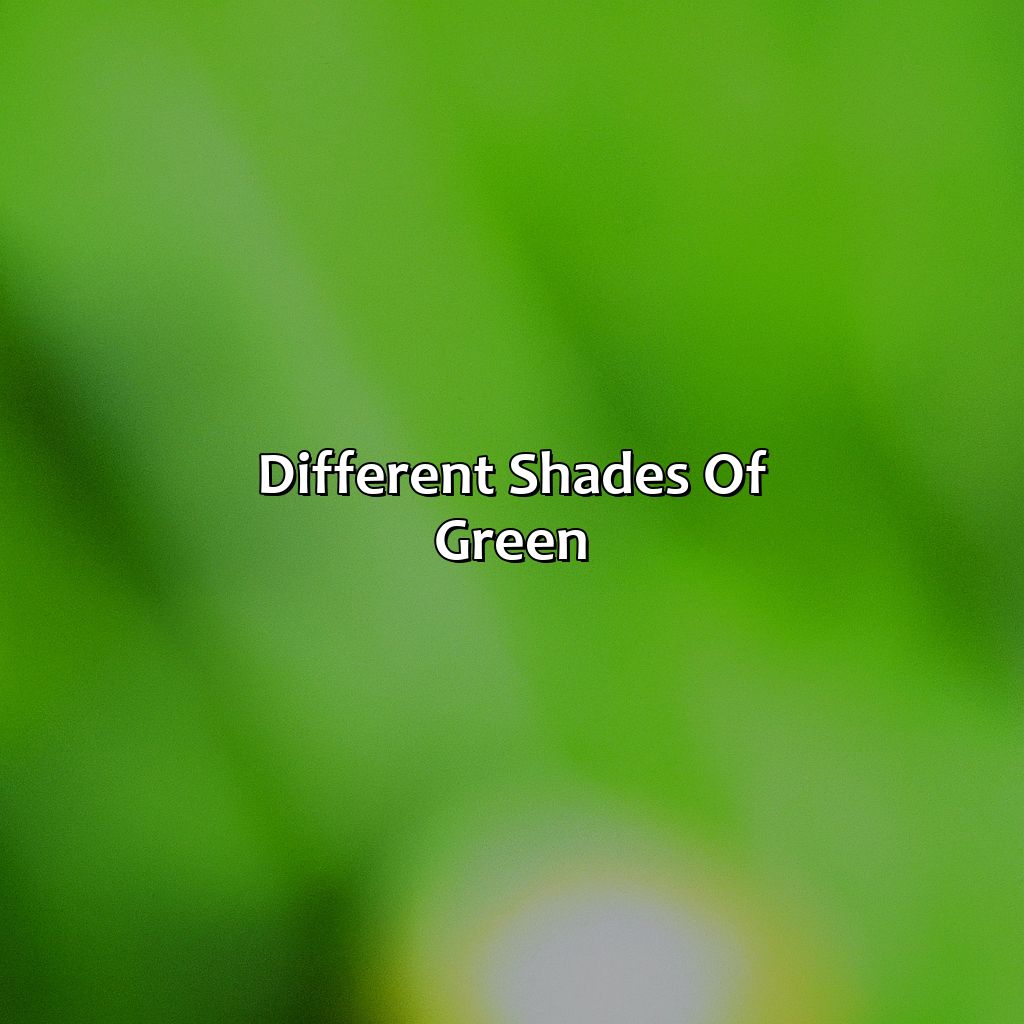Key Takeaway:
- Understanding the different shades of wood is important when choosing the right type of wood for your project. Factors such as the type of wood, the age, the treatment it undergoes and the finishing can all affect the final color and tone.
- Light woods like oak, maple, pine and birch are characterized by their light color, affordability and ease of workability, making them a popular choice for construction and furniture-making.
- Dark woods like mahogany, cherry and walnut have a rich, dense quality and are often used for luxury furniture and flooring. They tend to be more expensive and difficult to work with, but they make a statement in any room.
- Medium woods like elm, beech and cypress offer versatility and moderate pricing, making them a good choice for a range of projects. It’s important to choose the right shade of wood to match the room decor, lighting and furniture style, and there are different ways to complement wood shades, such as through contrast or monochromatic styles.
- When staining wood, it’s important to consider the type of stain and the technique used, such as oil-based or water-based stains and using a brush or rag to apply. Proper maintenance of wood shades involves cleaning and protecting wood furniture from dust and polishing or restoring faded wood shades through sanding and refinishing.
Understanding Wood Shades
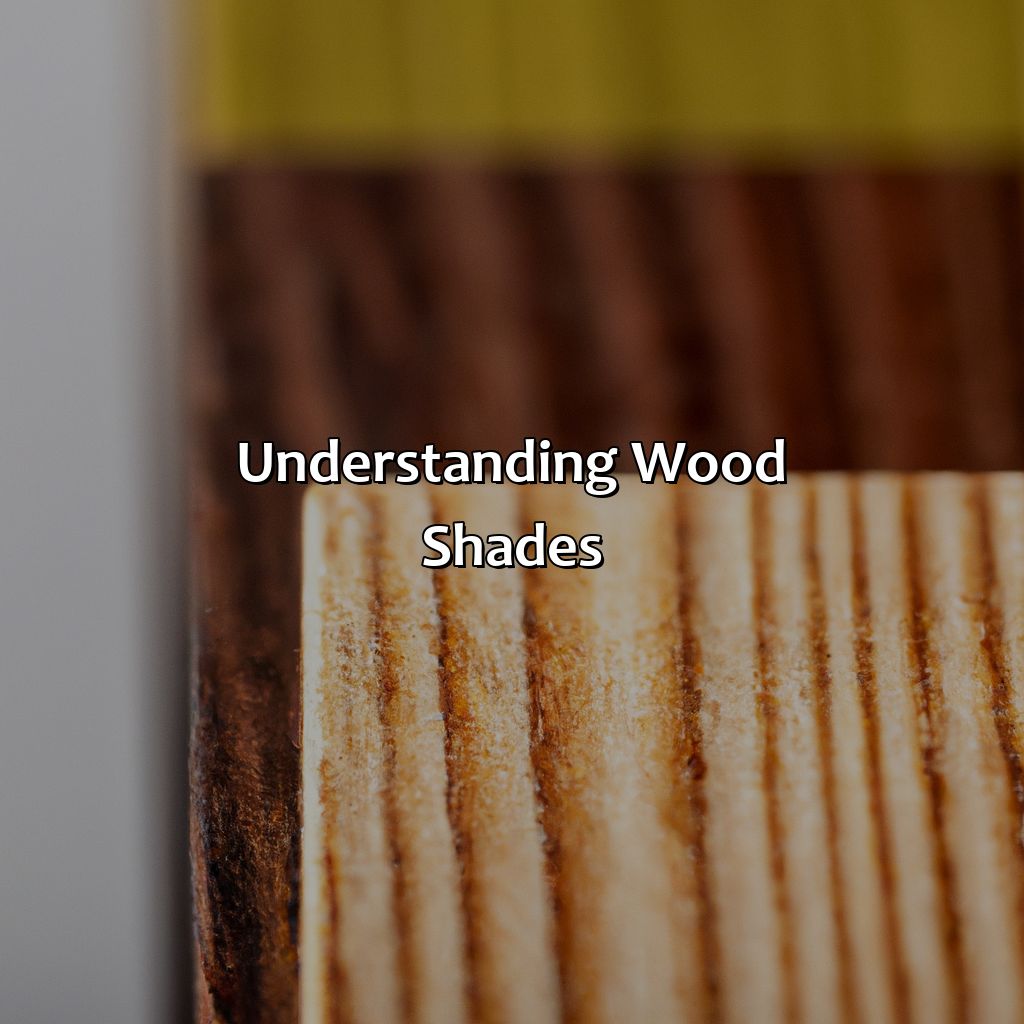
Photo Credits: colorscombo.com by Ralph Hill
Know the types of wood to understand their shades. Common examples include:
- oak
- walnut
- mahogany
- teak
- cherry
- pine
- cedar
- birch
- maple
- elm
- fir
- ebony
- chestnut
- ash
- hickory
- rosewood
- tigerwood
- bamboo
- driftwood
- weathered wood
- rustic wood
- and reclaimed wood.
Factors influencing shades are bleach, stain, paint, distress, burn, age, vintage, antique, whitewash, gray, and redwood.
Types of Wood
Wood comes in various types, each with distinct characteristics and applications. Hardwood trees, such as oak, walnut, mahogany, teak, cherry, and maple, are strong and durable, making them ideal for furniture, flooring and cabinetry. Softwoods like pine, cedar, fir and spruce are lightweight and cost-effective; they’re used primarily in construction projects. Other woods like birch, elm chestnut and ash often have their unique purposes due to their strength or resistance to moisture. Exotic woods like ebony wood or rosewood are known for their decorative value while tigerwood is perfect for outdoor use. Bamboo also falls under the category of wood variations that can be used for floors or walls due to its durability. Driftwood is used to create rustic looks on furniture.
| Type of Wood | Common Uses |
| Hardwoods | Furniture-making,flooring,cabinetry |
| Softwoods | The building’s structural elements. |
| Birch wood | Paper manufacturing. |
| Rosewood | Musical instruments,guitar and violin fingerboards. |
| Bamboo | Floors,walls,durable eco-friendly alternative to hardwoods. |
| Chestnut wood | Special-purpose wood. |
| Fir wood | Framing,doors,siding. |
| Ash wood | Furniture-making,floors,musical instruments. | Tigerwood | Decking. |
Each type of wood has unique characteristics that influence its color and texture. The natural beauty of a wooden article is mostly dependent on preserving the raw look; however, weathered, rustic, or reclaimed wood styles can still contribute to its attractiveness.
Interestingly, In ancient times, one of the most sought-after cabinets was created from cedarwood in Egypt. King Tutankhamun’s tomb had an abundance of these aromatic cabinets!
Wood shades can be influenced by bleach, stain, paint, distress, burn, age, vintage, antique, whitewash, gray, and even the redwood of the tree it came from.
Factors Affecting Wood Shades
Wood shades are affected by various factors that influence their appearance. These include the type, grain, natural aging, and treatment of wood.
In terms of type, each species has its unique shade, texture and grain pattern – some being lighter while others are darker. Furthermore, exposure to light can alter the natural color of wood over time through bleaching or darkening effects.
Below is a table illustrating the common factors affecting the shades of wood:
| Factors | Description |
|---|---|
| Type | Describes the kind of species used such as oak, maple or walnut. |
| Grain Pattern | Refers to how tree rings are positioned in relation to sawn boards; straight-grained woods appear uniform while others have knots and variations in texture. |
| Natural Aging | The time-span and level of exposure to sun rays determine whether woods turn darker or experience greying effects as they age. |
| Treatment | This could include painting, staining or applying distress layers that all affect the final shade outcome of a piece of furniture. |
Apart from these identified factors above, suggestions such as bleaching may lighten wood shades like redwood while staining with gray paint when treated produce a rustic vintage look popular in contemporary interior design trends.
Understanding the varying characteristics and types of woods is essential in making informed decisions on selecting suitable furniture finishes that perfectly blends with your home decor needs.
Why settle for a dim bulb when you can brighten up your space with light woods like oak, maple, birch, pine, cedar, and fir?
Light Woods
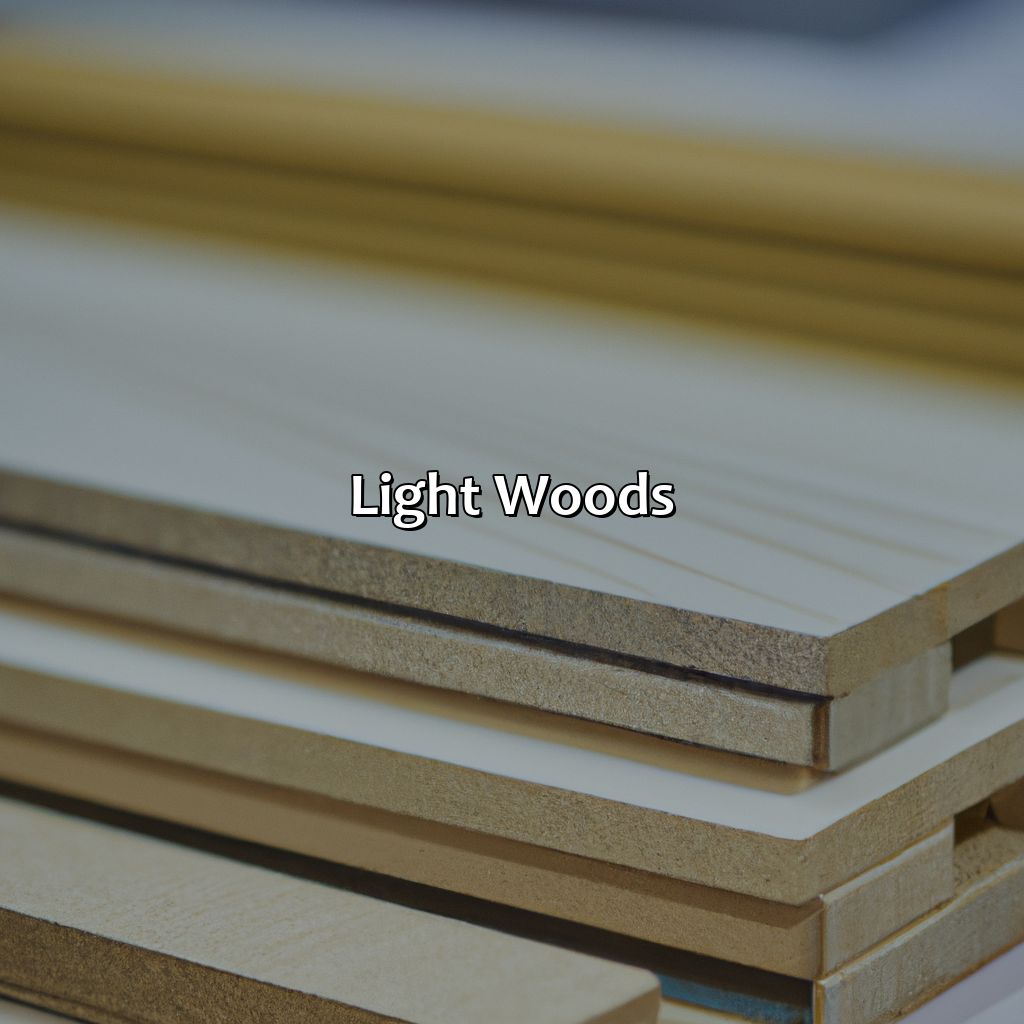
Photo Credits: colorscombo.com by Bradley Robinson
This section, titled “Light Woods,” explores the characteristics and examples of light woods, like natural wood, oak, maple, birch, pine, cedar, and fir. It has two sub-sections.
- The first one gives an overview of the traits of light woods: they are light in color, porous, easy to work with, and budget-friendly.
- The second sub-section covers many examples, like oak, maple, birch, pine, cedar, and fir.
Characteristics of Light Woods
Light-hued woods are characterized by their pale color, porosity, ease of use, and affordability. These woods are commonly used in contemporary furniture designs, and they can bring a sense of airiness to an interior.
| Light Weights | Characteristics |
|---|---|
| Maple wood | Durable, hard, fine-grained |
| Birch wood | Tight grain pattern, strength and hardness, moderate cost |
| Ash wood | Heterogeneous texture; easy to work with; popular option for home interiors. |
In addition to the above characteristics, light woods have an open pore structure that allows for easy staining. They can also be lightly tinted to produce a range of subtle hues.
Ensure you choose the right shade in the projects you undertake. Ensure you are not missing out on the opportunity to create bold contrasts or subtle accents with different shades of light woods.
By choosing light woods as your building material, you certainly save costs while experiencing good-quality performance from furniture pieces. Why settle for just one light wood when you can have the whole forest of oak, maple, birch, pine, cedar, and fir?
Examples of Light Woods
Light-toned woods are popular choices for furniture and home decors. These woods are perfect for achieving a peaceful atmosphere, making the space feel bright and airy. The color spectrum of light wood ranges from white to light brown, with grain patterns that add warmth to the room.
In the Table below, we have come up with examples of different types of light-toned wood:
| Wood | Color | Characteristics |
|---|---|---|
| Oak Wood | Light Brown | Durable and Resilient |
| Maple Wood | Light Yellow | Fine-grained Texture |
| Birch Wood | Pale Yellow/Brown | Even-textured and Smooth Surface |
| Pine Wood | Pale Yellow/White Color with Brown Knots | Soft and Lightweight |
| Cedar Wood | Light Brown/ Reddish-Brown | Rot-resistant and Insect-repelling Properties |
| Fir Wood | White/Yellow Color With a Hint of Red/Pink/Yellow/Gold | Strikingly Attractive Pattern, Easy to Work With |
It is worth noting that though these woods share common traits like functionality, texture, durability, finishing style can affect the final look. Hence, it’s advisable always to test a sample piece before choosing any wood type.
As there are several factors involved in the appearance of wood shades, matching them can be overwhelming. However, selecting complimentary materials or hues can elevate their beauty. For instance, green wall paint can bring out the warm hues in oak wood while blue cast light on birch’s highlights.
Pro tip: Avoid harsh chemical cleaners when maintaining wooden decor items as they may strip off natural oils, leading to fading colors sooner than expected.
Dark woods are like black coffee, they may look intimidating at first but once you appreciate their complexities, you become hooked.
Dark Woods
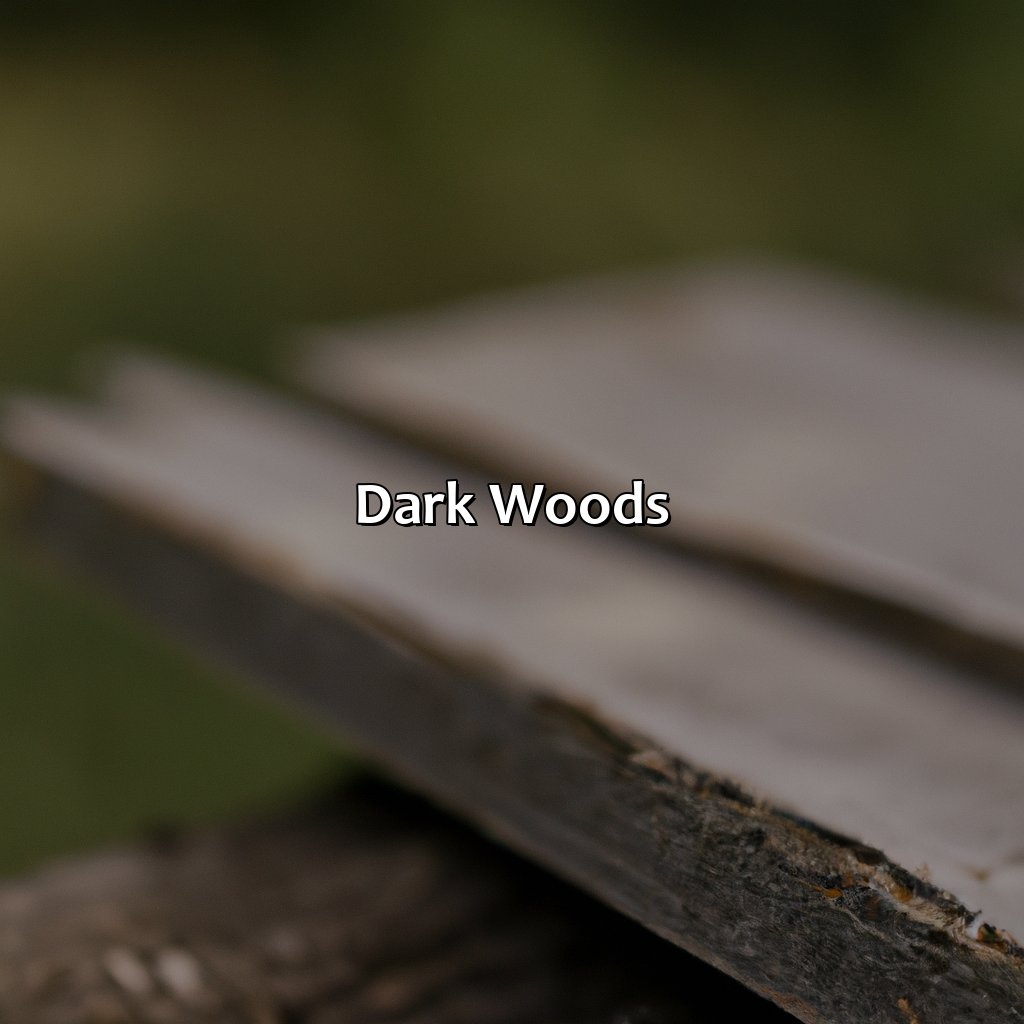
Photo Credits: colorscombo.com by Vincent Lee
Understand dark woods’ beauty? We’ll explore their traits and examples.
Dark woods have a deep color, are dense, and hard to work with. Popular choices include:
- Walnut, mahogany, cherry, ebony, chestnut, ash, hickory, rosewood, tigerwood, teak, cherry, oak, mahogany, and walnut veneer.
- Additionally, wood paneling and hardwood floors.
Characteristics of Dark Woods
Dark woods are known for their rich color and dense texture, making them a class of wood that is expensive and difficult to work with. They offer depth and sophistication to an interior space, and their dark hues have varying degrees of complexity.
Many types of hardwoods fall under this category, including mahogany, cherry, walnut, and ebony. These woods are often used for furniture pieces as they provide a luxurious look while increasing the longevity of the item by virtue of their durability.
One unique characteristic of dark woods is that they tend to show scratches more easily than other lighter woods. However, this can be mitigated through proper maintenance techniques such as polishing and waxing.
Pro Tip: When working with dark woods, choose complementary furniture and decor pieces that do not overwhelm or detract from their beauty. Lighter shades offset the richness of dark wood and create a striking contrast in the space.
If these dark woods were a horror movie, they’d be rated R for intense richness and depth.
Examples of Dark Woods
Dark woods refer to wood types with a deep and rich hue. These wood types are popular choices for furniture, paneling, and hardwood floors due to their elegant appeal and timeless quality.
The following table illustrates some examples of dark woods along with their unique characteristics:
| Wood Type | Characteristics |
|---|---|
| Walnut Wood | Rich brown color with a straight grain pattern |
| Mahogany Wood | Deep red-brown color with a fine grain pattern |
| Cherry Wood | Reddish-brown with a wavy grain pattern |
| Ebony Wood | Dark black/brown color with a uniform texture and high density |
| Chestnut Wood | Medium to dark brown color with a coarse grain pattern |
| Ash Wood | Light to medium brown color with distinct grain patterns |
| Hickory Wood | Pale honey-like color blending into darker browns, distinctive grain pattern keeps the rustic appearance intact |
| Rosewood | A special type of wood having an intense reddish-brown appearance, known for its natural oiliness which gives it excellent durability |
| Tigerwood | A beautiful exotic species, distinguished by irregular stripes across its surface that range from brown to orange in shade. |
It is also worth noting that dark woods can be used as veneers. Here are some examples:
- Teak veneer – Rich golden-brown color
- Cherry veneer – Deep red-brown shade
- Oak veneer – Medium brown hue
- Mahogany veneer – Deep red-brown or reddish-black color
- Walnut veneer – Warm brown shade
A pro tip when working with dark woods is to pair them with lighter shades or neutral colors in décor pieces such as cushions or curtains. This creates balance within the room and allows the wood’s natural beauty to stand out without overpowering the overall look of the space.
Why settle for a meh-dium wood when you can have the unique patterns and colors of elm, beech, cypress, or even sycamore?
Medium Woods
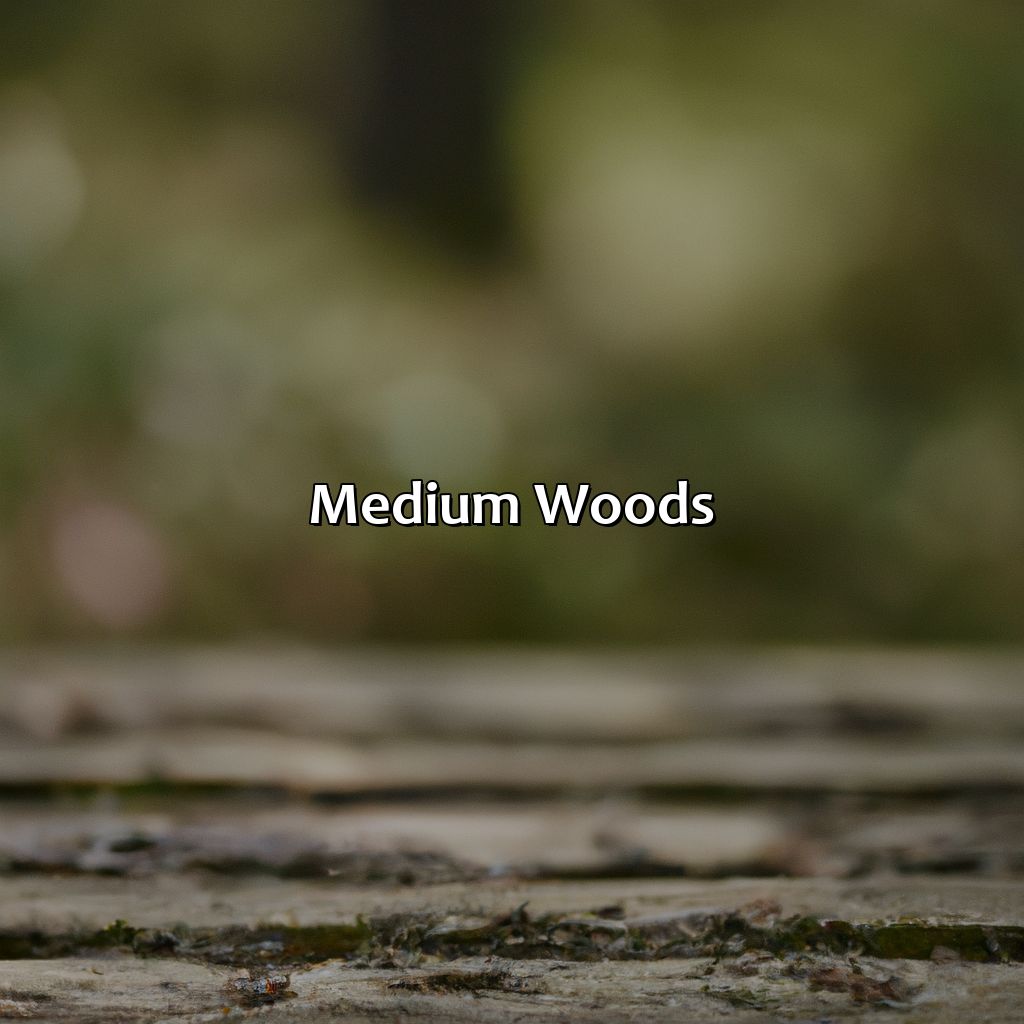
Photo Credits: colorscombo.com by Daniel Brown
Explore the Medium Woods! We have the perfect solution for you. Moderate price and unique qualities will bring your aesthetic vision to life. Let’s discuss the characteristics of Medium Woods.
Examples include:
- Elm
- Beech
- Cypress
- Alder
- Butternut
- Catalpa
- Eucalyptus
- Hackberry
- Hemlock
- Locust
- Persimmon
- Sycamore
Characteristics of Medium Woods
Medium Woods – Versatile and Moderately Priced
A significant range of wood shades can come under the category of Medium woods due to their versatility. These woods are moderately priced, making them an ideal choice for furniture, flooring, and cabinetry.
Characteristics of Medium Woods:
| Column 1 | Column 2 |
|---|---|
| Type | Oak, Cherry, Maple, Teak |
| Color | Ranges from light to dark tone |
| Grain Pattern | Straight or interspersed with waves/knots |
| Texture | Smooth to medium |
| Durability | Moderately durable, but can last long if proper care is taken |
Distinctive details about Medium Woods include:
- – They fall between dark and light shades and provide a perfect balance of color.
- – Their grains are not too prominent to dominate the overall look of furniture or flooring.
- – The texture is generally smooth or can vary from smooth to medium.
- – Compared to Light woods they have a more moderate level of durability while being highly versatile in their application.
For optimal use of Medium Wood furniture, consider:
- – Utilize them in well-lit areas to enhance the natural appeal.
- – Ensure it’s adequately sealed regularly for long-lasting durability.
- – Keep them away from humid locations to prevent damage.
In summary, Medium Woods serve as an excellent option due to their versatility and moderate price. They offer a wide range of colors and textures that work well with traditional or modern decor styles. Proper care is necessary for long-lasting results.
Whether you want a wood with character or one that’s plain, these medium woods offer a range of options to choose from.
Examples of Medium Woods
Medium woods can add a unique touch to your furniture. These woods are neither too light nor too dark, and blend well with different decor styles. Table 1 below shows examples of medium woods used in furniture making.
| Wood Type | Description |
|---|---|
| Elm Wood | Has a reddish-brown color, fine texture, and uniform grain patterns. It’s durable, aesthetically pleasing, and easy to work with. |
| Beech Wood | Is an excellent choice for furniture making due to its exceptional durability and resistance to shock and scratches. Its colors range from cream to reddish-brown with visible growth rings make it ideal for design accents. |
| Cypress Wood | This lightweight wood is a perfect fit for outdoor settings due to its rot-resistant quality and ability to withstand harsh weather conditions over extended periods. It has tan or golden tones sometimes mixed with darker tones and distinctive grain that gives it beautiful natural patterns when finished under sealer or varnish finishes. |
| Alder Wood | Has a pale yellow color that darkens over time when exposed to sunlight, acquiring a rich brown hue; this type of finish often renders alder beautiful designer pieces with excellent durability and strength. Its density lies midway between hardwoods & softwoods which makes it relatively fewer professional carpentry skills required for crafting it into designer fittings like shelves or bookcases or wardrobes or sideboard cabinets etcetera. |
| Butternut Wood | Is known for its chocolate-colored heartwood, which sharply contrasts against the creamy sapwood portion of the tree trunk more close-grained than plywood sheets texture lighter weight than walnut but very similar appearance -beige undertones with slight grey streaks causing well balanced horizontal stripe pattern. |
| Catalpa Wood | Recommended for both indoor and outdoor settings – A lesser-known exotic wood amongst homeowners gets appreciated explicitly as treated timber for unique outdoor porches or decking surfaces as it is highly resistant to decay and rot. It has a light yellowish-brown color that darkens over time, giving it a warm appearance that can complement a wide range of decor styles. |
| Eucalyptus Wood | A hardwood that naturally grows in an array of shades – pale cream with tinges of pinkish-grey hues – This wood has an intense bluish-green color due to its high tannin amounts, making it one of the most refreshing hardwoods to work with. |
| Hackberry Wood | Lightweight, durable wood with excellent shock resistance properties. The colors vary from olive brown to light tan often producing irregular stripes soft slightly open grain patterns that vary depending on tree location. |
| Hemlock Wood | Pale-natured wood predominantly used for rustic furniture crafting due to its defined knots and irregular lines providing character than uniformity; although not as hard as oak which could make denting possible texture more subtle than other hardwoods so often left unfinished or oiled after smooth sanding. |
| Locust Wood | This dense and heavy domestic lumber is naturally rot-resistant, owing to its innate strength, durability, and coarse texture which make it suitable for use in outdoor structures like fences, walkways outdoor benches and porch swings etcetera. The heartwood has medium-brown tones with snaking shinier fernlike whorls giving this type solidified substance a delicate appearance. |
| Persimmon Wood | Widely celebrated in Japan for being excellent quality cane construction material due to its tough grain structure, straight-grained patterns oval-shaped circumference ad exquisite orange-colored hue oftentimes blends well with other mediums enhancing existing natural wooden tones better than bleached white neutral schemes bases when embraced. It’s low density than Oak providing more ease when hand crafting. |
| Sycamore Wood | Its fine-textured grains produce beautiful brown patterns often seen in exclusive designer tables, cabinets and bed frames – the golden cream color of its sapwood contrasts nicely against heartwood characteristically characterized by an interlocking grain that forms unique geometric shapes. |
Catalpa wood, eucalyptus wood, hackberry wood, hemlock wood, locust wood, persimmon wood, and sycamore wood are relatively uncommon woods used for furniture making but add beautiful natural tones to your home decor. Finding the perfect match between wood tones is like a blind date – it’s all about the chemistry between the colors.
Matching Wood Shades
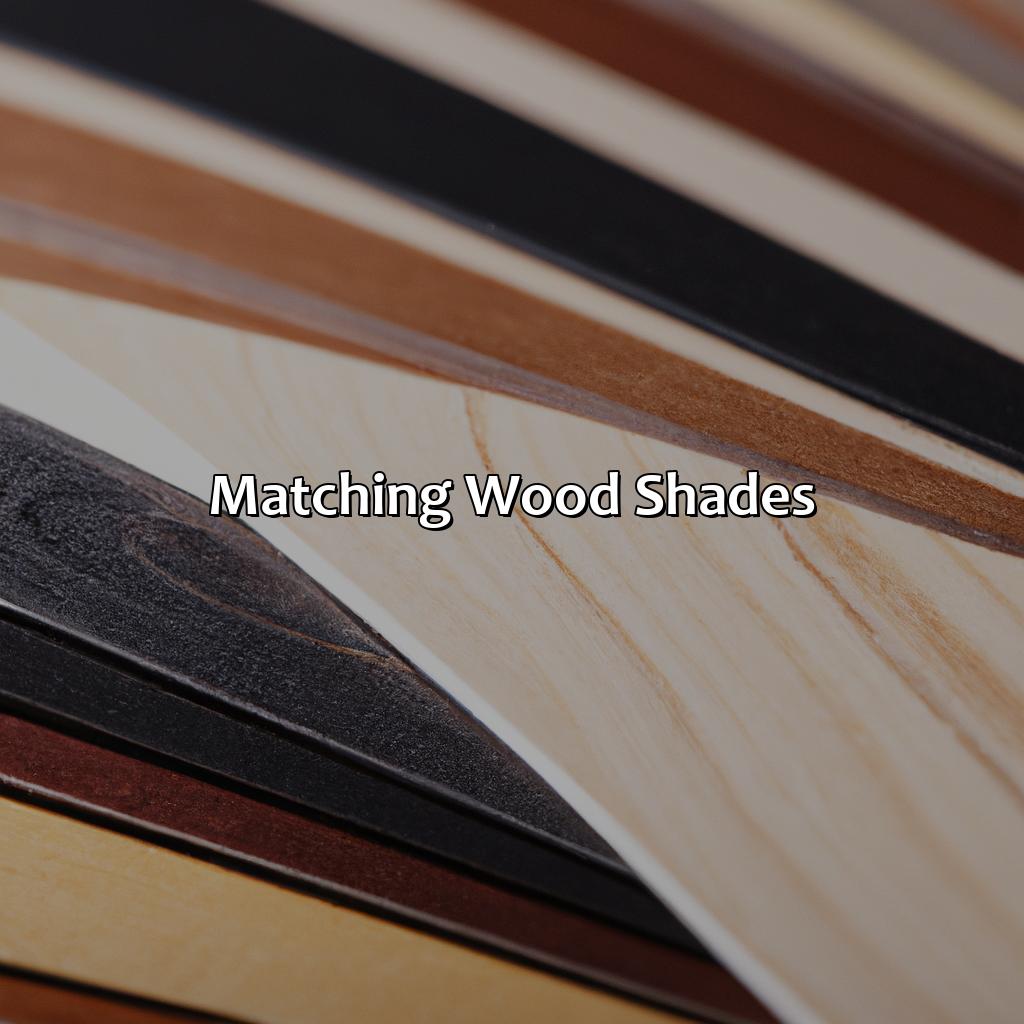
Photo Credits: colorscombo.com by Frank Mitchell
Want to match wood shades in your home decor? You need to know the right tone and color! For a harmonious look, use contrast skillfully. In this section, we’ll dive into the nuances of wood tones and colors. Learn how to complement your design with different shades of wood!
Choosing the Right Shade
When selecting the ideal shade of wood, it is vital to consider various factors such as room decor, lighting and furniture style. It’s significant to choose a shade that best compliments the overall design scheme. One must always keep in mind that each type of wood offers unique characteristics and colors. Identifying the right shade can help balance elements in the room while providing continuity and harmony.
It is key to select a shade of wood that complements the prevailing color palette of the space. Warm-toned shades like maple or walnut work well with primarily reds, yellows, oranges, browns, and neutrals; when paired with blues or greens can help energize and create balance in an area. Cool-toned shades like oak or cherry perform well in combination with primarily whites, grays, blues and other lighter tones giving a fresh and inviting look.
Finally, there are diverse strategies one may employ while fitting different kinds of woods within an area. Utilizing different textures among varying types of woods provides emphasis on distinguishing hues while mitigating overbearingness effectively. Another approach is using complementary shades of wood for a seamless look that enhances room cohesion.
Don’t miss out on creating an inviting space by selecting the perfect tone for your wooden furniture! If you want to create a harmonious look, try complementing wood shades with contrasting or analogous tones.
Complementing Wood Shades
To complement the shade of wood, choose colors that either contrast or match well with the wood’s hues. Creating a balance between the furniture set and the walls gives an appealing look to any interior decoration setting. Monochromatic color schemes require complementary shades that differ in lightness or darkness while maintaining uniformity. Analogous shades are close to each other and create harmony because they share similar undertones.
Matching wood shades with other materials highlights their natural beauty. It is essential not to overdesign, as it can blend out the elegance of woodworking entirely. By keeping things simple while giving thought to color combinations, homeowners can achieve striking looks without sacrificing practicality.
For those who seek contrast, pairing dark woods with light-colored walls and fabrics creates an eye-catching appearance. On the other hand, placing light woods against darker-colored backgrounds elevates their beauty and makes them stand out. To steer clear of a sterile feel, adding monochromatic accents such as dark metal fixtures or colorful throw pillows can provide visual interest.
Staining wood is like getting a tattoo, you want to find the right color and application technique to make it last.
Wood Staining
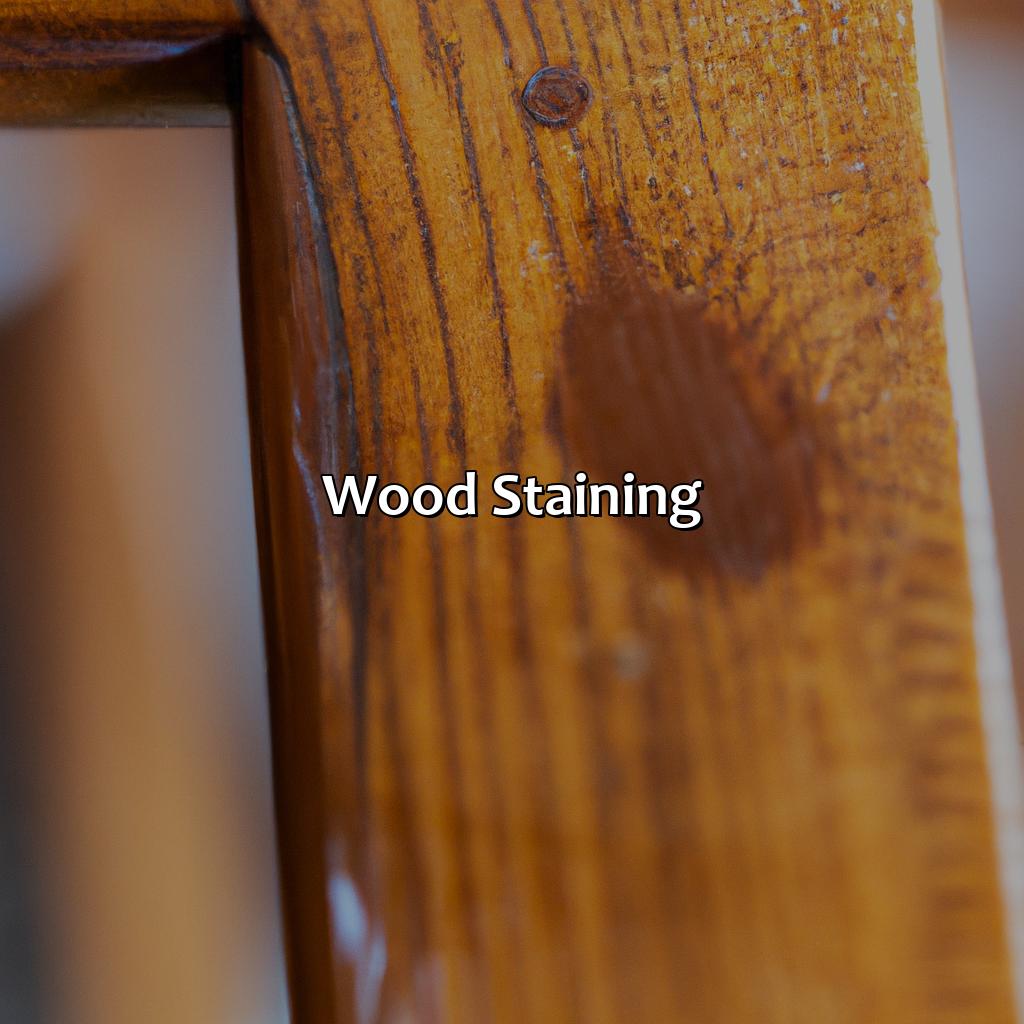
Photo Credits: colorscombo.com by Vincent Davis
Make your wood even more beautiful with wood stains! There are lots of types to choose from — oil-based, water-based, gel stains and varnish. You can apply them using a brush, rag, spray or wipe-on method. Discover the best type of wood stain and technique to get the desired finish!
Types of Wood Stains
Various Wood Staining Solutions:
A wide variety of staining options is now available to help achieve the desired wood shades while adding a layer of protection. Here is a breakdown of the different solutions categorically:
| Category | Type | Properties |
|---|---|---|
| Oil-based | Penetrating/ Dye | Longer drying times. Offers a rich, transparent tone |
| Water-based | Dye/ Toner | Quick-drying, and an eco-friendly alternative |
| Gel | Pigment-based | Offers even coverage |
| Varnish | Clear-coat stain | Protects as well as stains |
It’s important to note that each category has its limitations such as drying time, environmental impact, and effectiveness on various types of wood.
To enhance the durability further, one could consider topcoat products after applying stains.
Make sure you choose your stain based on your project and preferences for longevity and finish.
Missing out on all these solutions can hinder the quality of your project completion!
Applying wood stain is easy, just pick your weapon of choice: brush, rag, spray, or wipe-on.
Techniques for Applying Wood Stain
Applying wood stain requires specific techniques to achieve the desired shade and finish. Learn how to apply wood stain like a pro using brushes, rags, or spray cans.
- Prepare the surface of the wood by sanding it smoothly with a fine grit sandpaper until it’s completely free of dirt, dust, and debris.
- Apply wood stain using your preferred method – brush, rag, or spray can, on the wood in long strokes or circular motions following the direction of the grain. For larger projects such as floors or decks, it may be beneficial to use a paint sprayer.
- Wait for the recommended drying time depending on the type of stain used before applying additional coats. Repeat step two if more coats are needed.
For best results, avoid overworking areas and always go back over brushed or sprayed areas with a wipe-on technique to ensure even distribution of color across all parts of your project.
Using top-quality products such as water-based stains will provide you with long-lasting protection while maintaining transparency over your chosen shade.
Finally, did you know that applying stains dates back all the way to ancient civilizations such as Egypt and Greece who would use natural pigments in linseed oil? By researching into historical accounts surrounding these types of woodworking practices one can gain an appreciation for progression in modern techniques today.
Cleaning and protecting wood furniture is like a long-term relationship – it takes effort and commitment, but the end result is worth it.
Maintenance of Wood Shades
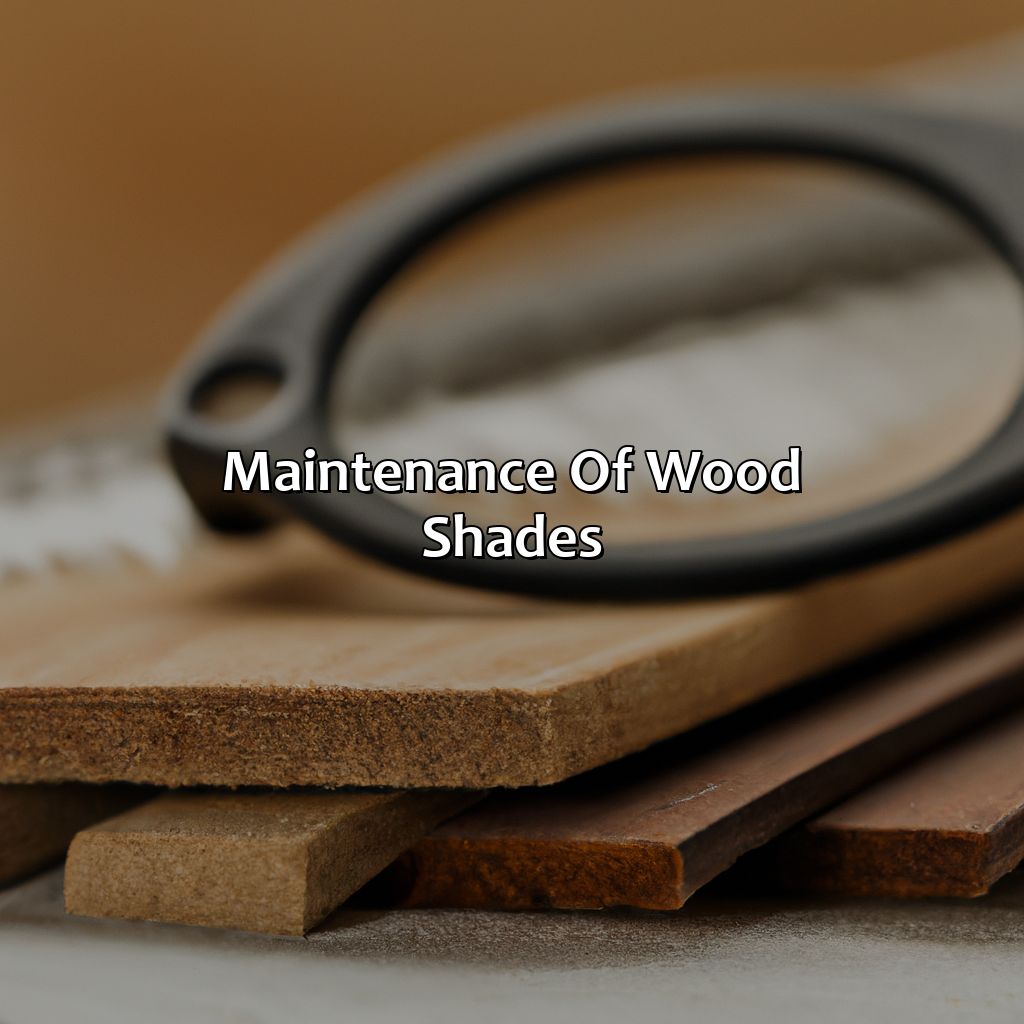
Photo Credits: colorscombo.com by Stephen Adams
For keeping wood looking its best, like cleaning, protecting, and restoring faded shades, you need effective solutions. In this section, Maintenance of Wood Shades, explore the sub-sections.
- Cleaning and Protecting shows you how to clean wood with dust, polish, wax, oil, or water-based cleaners.
- Restoring Faded Wood Shades introduces sanding, refinishing, and restaining techniques.
Cleaning and Protecting Wood Furniture
To take care of your favorite wooden furniture, it is essential to understand the proper method of preservation. Here are the five steps for keeping your wooden furniture clean and protected:
- Dust: Use a soft-bristled brush or microfiber cloth to remove dust from the surface.
- Polish: Apply a small amount of polish on a clean cloth and rub gently over the wood in circular motions.
- Wax: Use wax for an extra layer of protection by applying a small amount on a soft cloth. Rub in the same way as polishing.
- Oil-based cleaner: For tough grime, use oil-based cleaners and apply them with a sponge or rag for deeper cleaning.
- Water-based cleaner: Avoid using water on wood, but if necessary, use water-based cleaners that have minimal moisture.
Keep in mind that excessive moisture can damage the wood finish and lead to warping or cracking. Therefore, make sure not to over-wet while cleaning it.
It is best to avoid placing hot dishes or drinks directly on the wooden surface as heat can cause discoloration and scars on top. Also, keep it away from sunlight and extreme temperatures to preserve its natural shine.
According to Home Depot, regular dusting helps remove tiny scratches where dirt particles collect over time.
Bringing back the shine to your faded wood: sand, refinish, and restain your way to a furniture resurrection.
Restoring Faded Wood Shades
Wood shades can fade over time due to various factors such as exposure to sunlight or moisture. Restoring faded wood shades can bring back the original beauty and luster of wooden furniture. Here is a simple guide to help you restore faded wood shades.
- Start by sanding the surface of the wood using fine-grit sandpaper to remove any previous finish or debris.
- Next, apply a wood stain that matches the original shade of the wooden furniture. Allow it to dry for at least 24 hours before proceeding.
- If necessary, apply another coat of stain until achieving the desired shade.
- Finally, seal the surface of the stained wood with a clear finish such as lacquer or polyurethane.
Restoring faded wood shades is an easy and cost-effective way to maintain the original beauty of wooden furniture. Be sure to follow these steps carefully, and use proper protective gear when sanding or refinishing wooden furniture.
Sanding, refinishing, and restaining are essential aspects when it comes to restoring faded wood shades properly. Additionally, make sure to use only high-quality products and tools in order not to damage your precious furniture.
Some Facts About Different Shades of Wood:
- ✅ Different types of wood have unique colors and patterns that can be used to create beautiful and unique pieces of furniture. (Source: Houzz)
- ✅ The natural aging process of wood can cause changes in color and tone, resulting in a unique patina over time. (Source: Fine Woodworking)
- ✅ Wood stain can be applied to change the color of wood while still allowing the natural grain to show through. (Source: Popular Mechanics)
- ✅ The color and tone of wood can be affected by the amount of sunlight it receives and the type of finish applied. (Source: Bob Vila)
- ✅ The use of mixed woods in furniture design can create a striking visual effect and add depth and texture to a space. (Source: Elle Decor)
FAQs about Different Shades Of Wood
What are the different shades of wood available?
There are various shades of wood available ranging from light to dark. Some of the popular shades include natural, blonde, honey, maple, cherry, mahogany, walnut, ebony, and charcoal.
What factors affect the shade of wood?
The shade of wood can be influenced by several factors including the type of wood, age of the wood, how the wood was cut, the finishing techniques applied, and exposure to light.
Can different shades of wood be mixed in one room?
Yes, different shades of wood can be mixed in a room to create a unique look, but it’s important to ensure that they complement each other well. This can be achieved by selecting shades that are either similar or complement each other.
What is the best way to determine the shade of wood to use?
The best way to determine the shade of wood to use is by first considering the color scheme of the room. Next, try to match the shade of the wood with other elements in the space, such as furniture, flooring, and accessories. It’s also a good idea to take into consideration the natural light that the room receives and how it may affect the appearance of the wood.
What are some popular wood species and their shades?
Some popular wood species and their shades include oak (light to medium brown), walnut (medium to dark brown), mahogany (red to dark brown), cherry (reddish-brown), and pine (light yellow to medium brown).
How can I maintain the shade of my wood furniture?
To maintain the shade of your wood furniture, avoid exposing it to direct sunlight and moisture, which can cause discoloration and warping. Regular dusting and cleaning with a soft cloth and wood cleaner can also help preserve the color and appearance of the wood.

